On Neural BRDFs: A Thorough Comparison of State-of-the-Art Approaches
WACV 2025
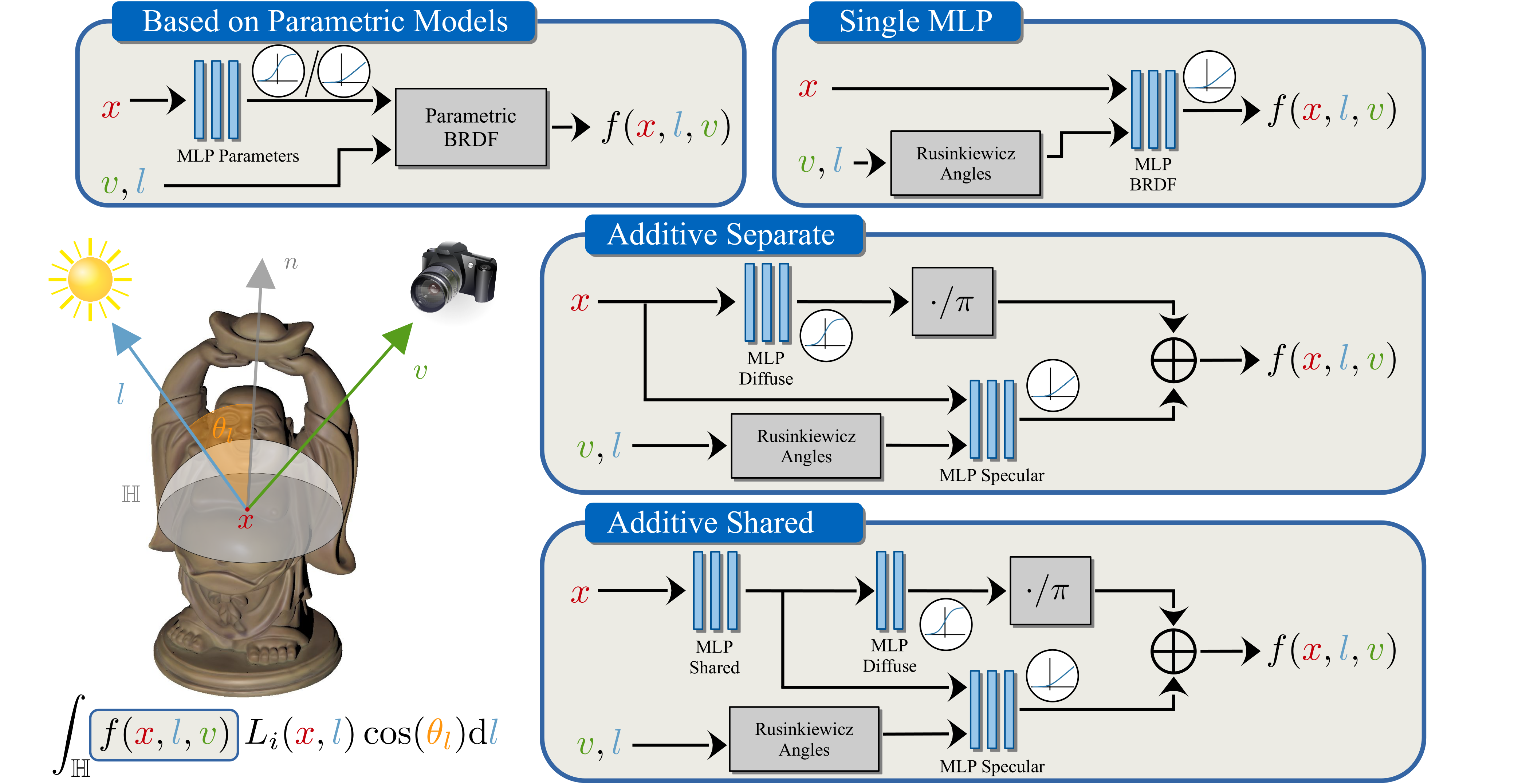
Abstract
The bidirectional reflectance distribution function (BRDF) is an essential tool to capture the complex interaction of light and matter. Recently, several works have employed neural methods for BRDF modeling, following various strategies, ranging from utilizing existing parametric models to purely neural parametrizations. While all methods yield impressive results, a comprehensive comparison of the different approaches is missing in the literature. In this work, we present a thorough evaluation of several approaches, including results for qualitative and quantitative reconstruction quality and an analysis of reciprocity and energy conservation. Moreover, we propose two extensions that can be added to existing approaches: A novel additive combination strategy for neural BRDFs that split the reflectance into a diffuse and a specular part, and an input mapping that ensures reciprocity exactly by construction, while previous approaches only ensure it by soft constraints.
Overview
Comparison of Different Neural BRDF Approaches
In this work, we systematically compare existing neural BRDF modeling approaches within a unified framework. We estimate the BRDFs from known geometry (mesh) and multiple views for single directional lights.
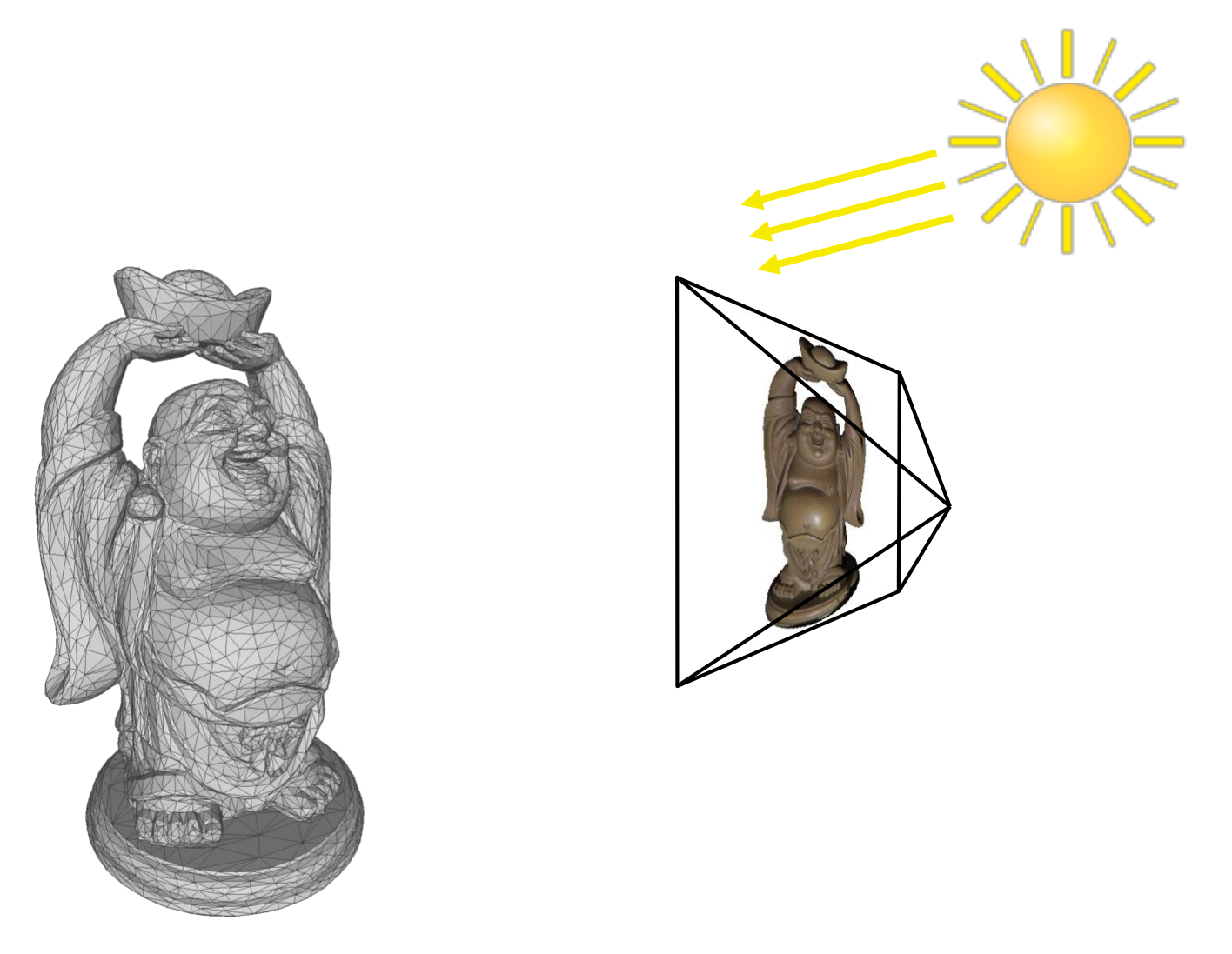
We analyze reconstruction quality as well as the fulfillment of receprocity constraints and energy conservation.
Input Mapping to Ensure Reciprocity
Moreover, we propose a novel input mapping that ensures reciprocity for isotropic purely neural BRDFs by construction. The approach is based on the reciprocity condition for the Rusinkiewicz angles:
\[f(x,\theta_h, \theta_d, \phi_d)=f(x,\theta_h,\theta_d,\phi_d+\pi)\]We employ this condition to construct the following input mapping.

Enhancement Additive Split
Finally, we introduce an enhancement for additive split architectures based on the observation that light reflected at the surface (specular) is unavailable for subsurface scattering (diffuse). To address this, we introduce a factor \(\xi\) that allows the model to downweight the diffuse component depending on the specular part.
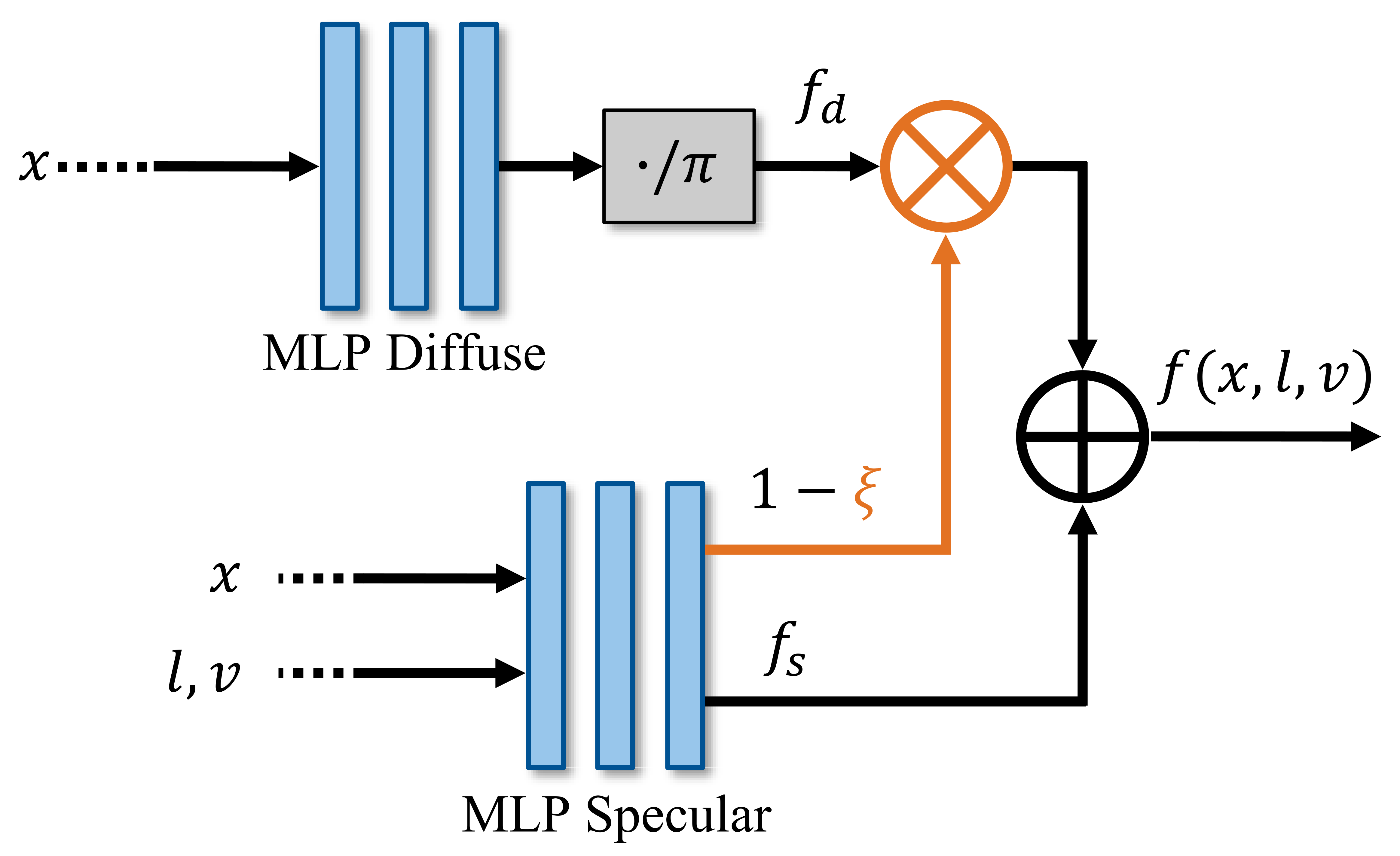
An additional photometric L1 loss between the raw diffuse part (\(f_d\)) and the ground truth image, along with an L1 regularization on the specular part (\(f_s\)), is used to reduce ambiguity. This encourages the model to represent as much information as possible through the diffuse part while relying on the specular part only for view-dependent components.
Results
Comparison of Different Neural BRDF Approaches
We find a significant difference between parametric models and purely neural approaches for highly specular materials and complex reflection patterns.
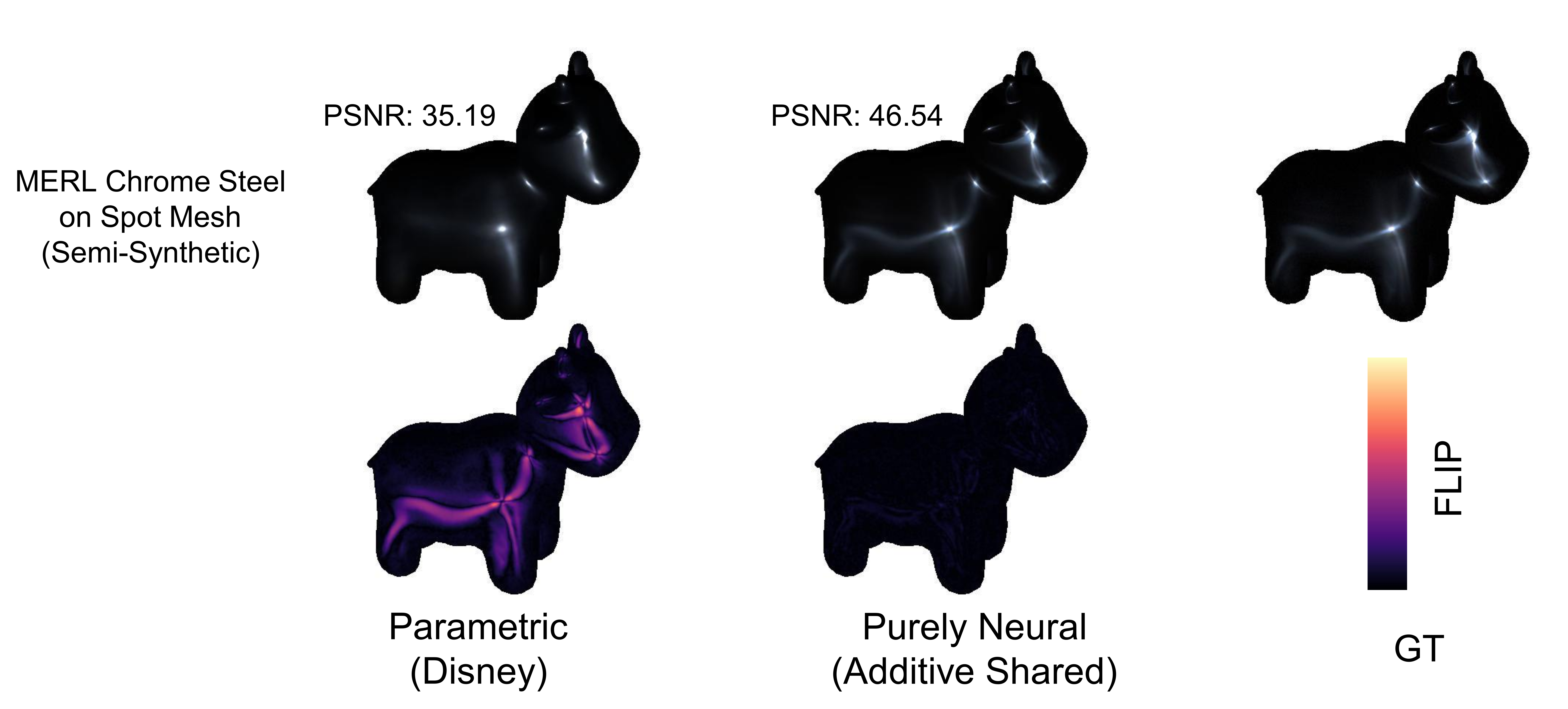
We find similar behavior for other parametric and purely neural approaches.
For less complex materials, the differences are much smaller.
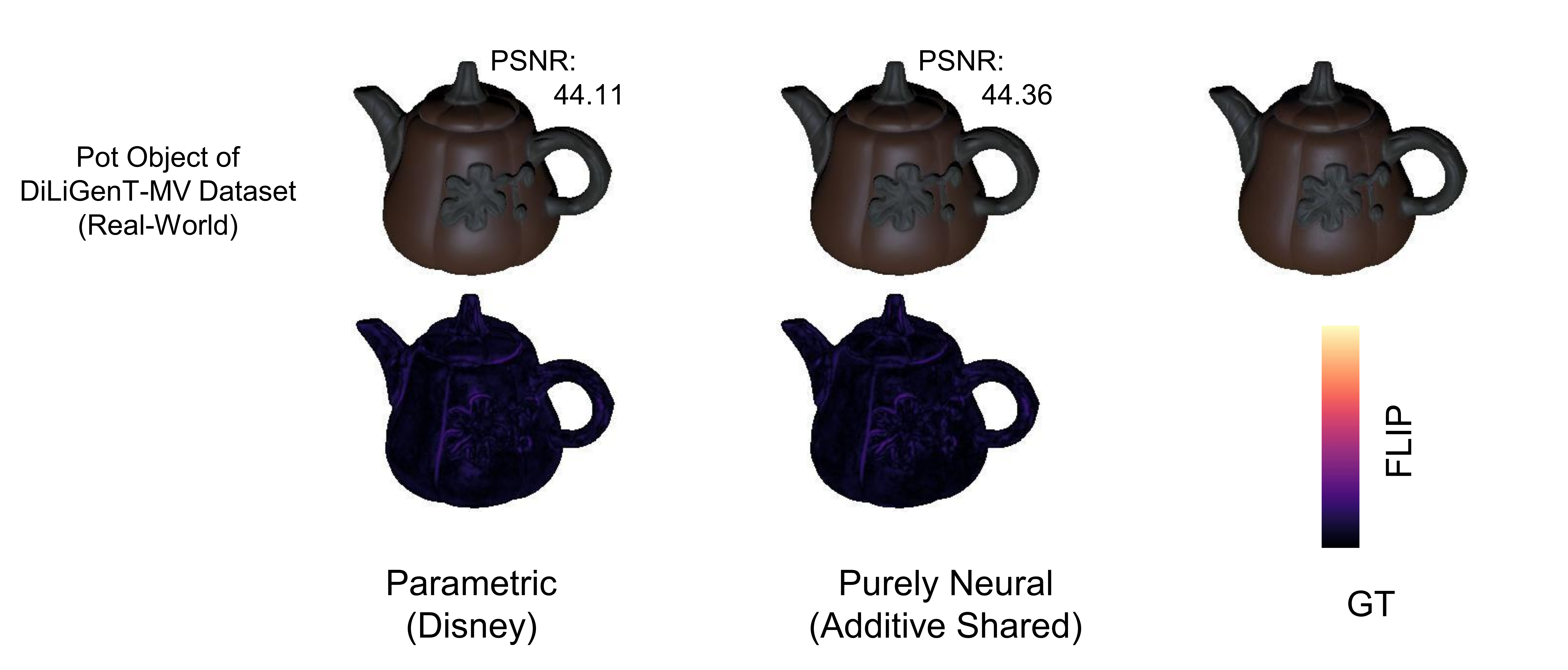
Enhancement Additive Split
The enhancement gives a consistent improvement of 0.1 to 0.4 dB PSNR. This suggests that the additional freedom can help the model represent the reflectance more faithfully.
More Results in the Paper
Please see the paper and the supplementary material for more results, including an analysis of the reciprocity and the energy conservation, an alternative angle parametrization and more.
Citation
@inproceedings{hofherr2025neuralBRDF,
title = {On Neural BRDFs: A Thorough Comparison of State-of-the-Art Approaches},
author = {Hofherr, Florian and Haefner, Bjoern and Cremers, Daniel},
booktitle = {Proceedings of the IEEE/CVF Winter Conference on Applications of Computer Vision},
year = {2025}
}